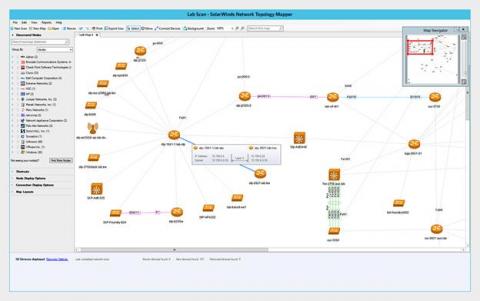Operations | Monitoring | ITSM | DevOps | Cloud
Networks
The latest News and Information on IT Networks and related technologies.
How to Set Up a Reverse Proxy in Nginx and Apache
To work efficiently, the client and server exchange information on a regular basis. A webserver typically employs reverse proxies. A client sees a reverse proxy or gateway as if it were a regular web server, and no extra configurations are required. The client sends standard requests to the reverse proxy, which then determines where to send the data, providing the final result to the client as if it were the origin.
All About Network Topology-Types and Diagrams
Streamline Migration and Application Onboarding in DX APM with EasySeries
To realize the full potential of APM, many customers are migrating from their existing APM 10.7 clusters to DX APM. In addition, they continue to onboard new applications for monitoring. These efforts require a series of steps, including the configuration of experience views, universes, and DX Operational Intelligence services.
3 ways OpUtils' IP address tracker fosters effective IP management
How a network’s IP address space is structured, scanned, and managed differs based on the organization’s size and networking needs. The bigger your network is, the more IPs you need to manage, and the more complex your IP address hierarchy gets. As a result, issues such as IP resource overutilization and address conflicts become challenging to avoid without an IP address management (IPAM) solution in place.
10 reasons you need a network configuration manager
On June 2, 2019, Google Cloud Platform had a major network outage that disrupted the services of Discord, Spotify, and Snapchat, among many others. The root cause was a benign misconfiguration coupled with a software bug that caused the loss of configuration data. The issue was resolved almost four hours later after the lost configuration data was rebuilt and redistributed.
What is Distributed Network Monitoring for SaaS and SD-WAN
Nowadays, companies are embracing flexibility. Many businesses are embracing remote offices and working from home, storing their data in the Cloud, ditching centralized data infrastructures, and moving towards networks using SaaS and SD-WAN. With distributed architectures becoming the new normal, it’s important to have a distributed monitoring solution that can keep up. In this article, we’re running you through everything you need to know about how distributed network monitoring works.
Monitoring Juniper networks with Grafana
This article will dive into your questions surrounding monitoring Juniper Networks. In addition, you will be able to learn how Grafana can help you to monitor Juniper networks systems. As you read through, you will be able to get the answers for the following questions...











